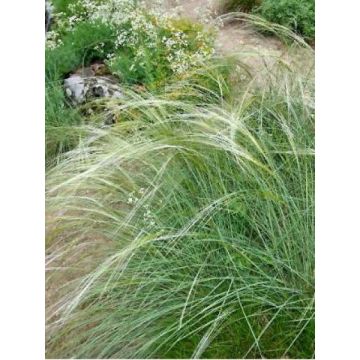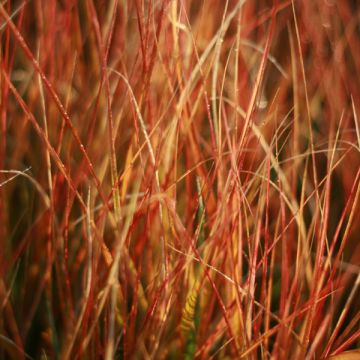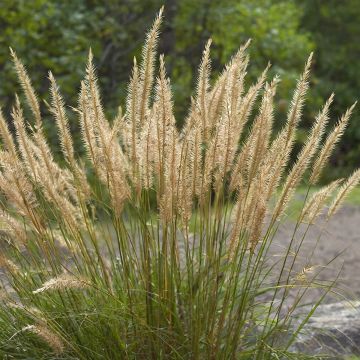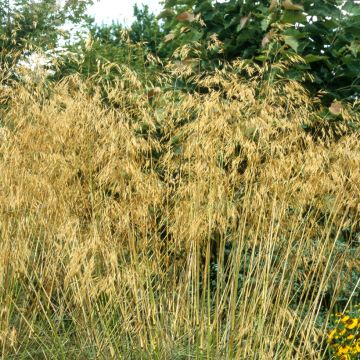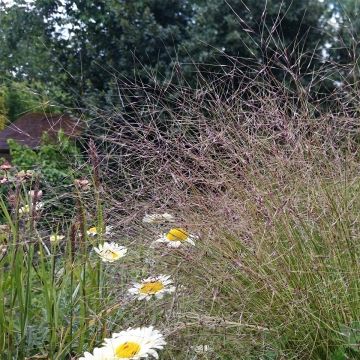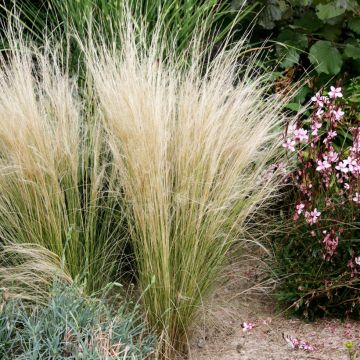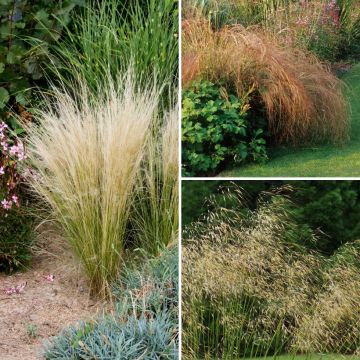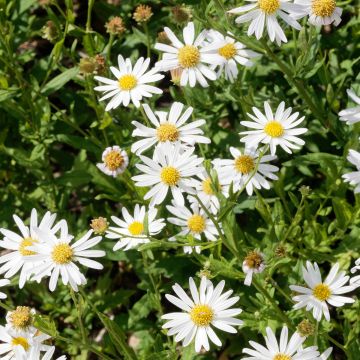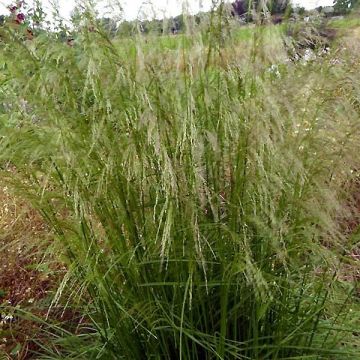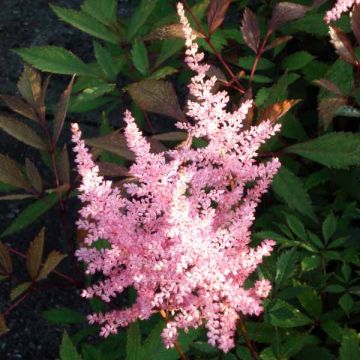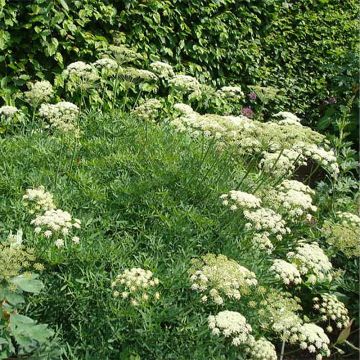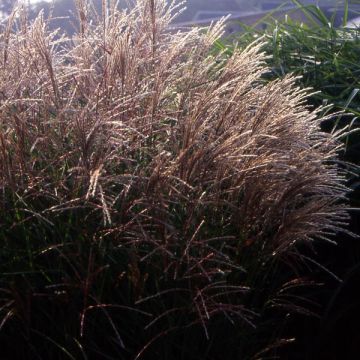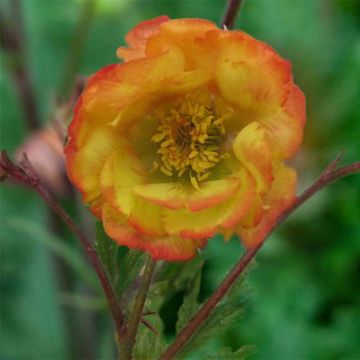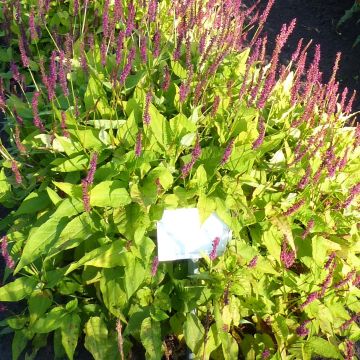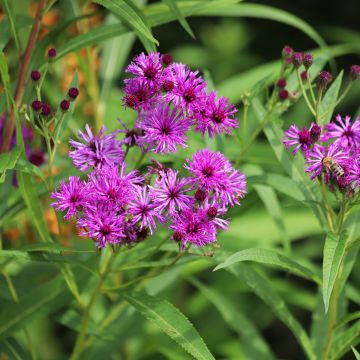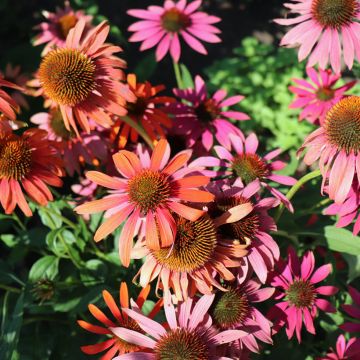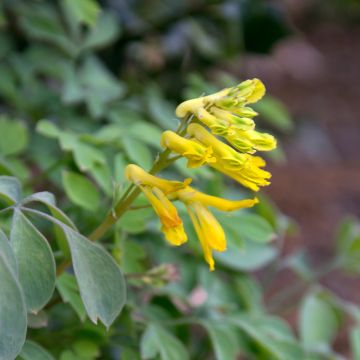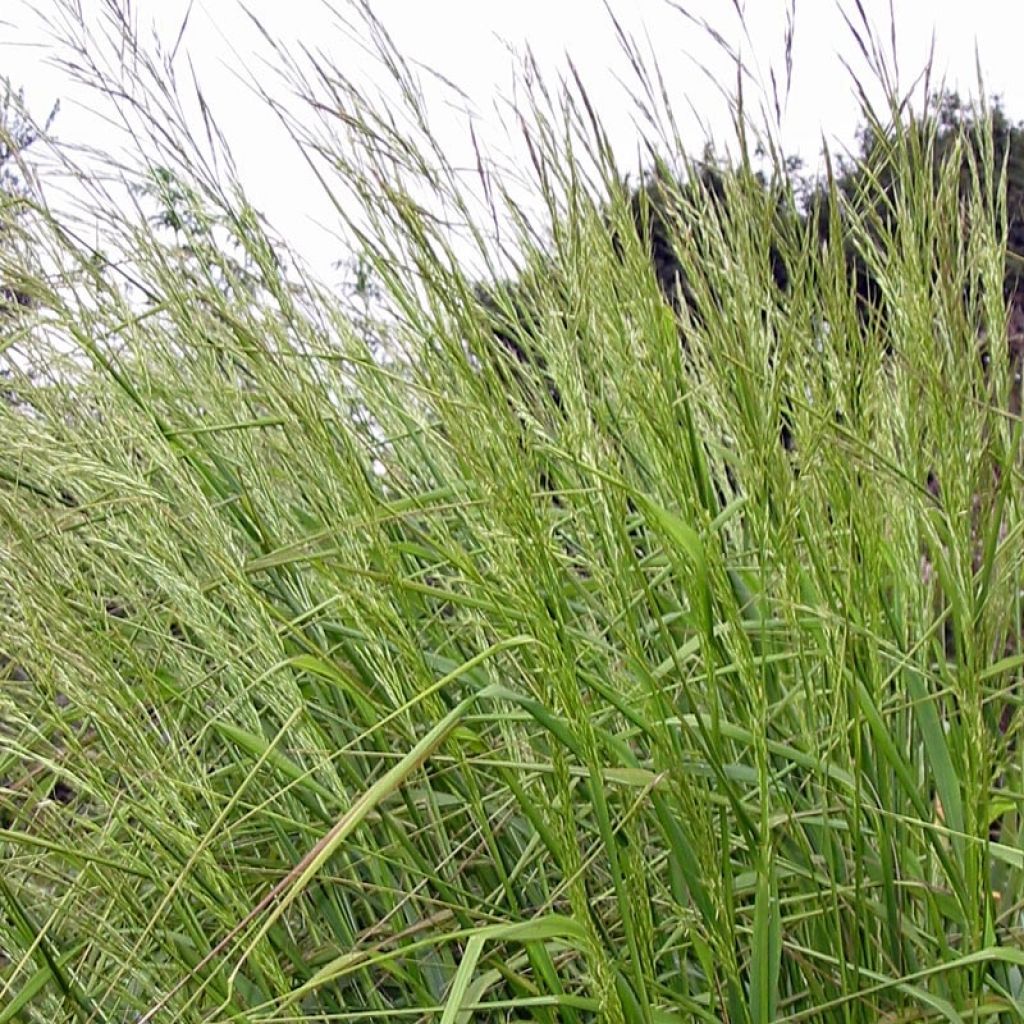

Stipa extremiorientalis - Stipe
Stipa extremiorientalis
Stipa extremiorientalis
This item cannot be shipped to the selected country
Delivery charge from €5.90
More information
Schedule delivery date,
and select date in basket
This plant carries a 12 months recovery warranty
More information
We guarantee the quality of our plants for a full growing cycle, and will replace at our expense any plant that fails to recover under normal climatic and planting conditions.
From €5.90 for pickup delivery and €6.90 for home delivery
Express home delivery from €8.90.
Does this plant fit my garden?
Set up your Plantfit profile →
Description
Stipa extremiorientalis is an elegant Asian grass, producing a clump of erect then arching evergreen, bright green leaves. Upright and feathery spikes appear in summer, then turn golden bronze in autumn, creating warm-toned rustic scenes. It is very hardy, and will thrive in any well-drained or even dry soil, in full sun or light shade, in meadows, rockeries and pots.
The East Asian feather grass comes from the eastern regions of Asia (China, Siberia, Japan) where it grows in dry high-altitude prairies. Botanists now call it Achnatherum pekinense, although this name is still not widely used in horticulture, as the plant is rarely offered for sale. It forms a clump of stiff, evergreen, bright green, eye-catching leaves, slightly arched at their tips. Between July and September, light and feathery spikes emerge from the clump, reaching about 1.20 m (4ft) high and 40 cm (16in) wide which move with the slightest breeze producing a soft rustling sound. As temperatures drop, the inflorescences and foliage take on warm golden hues, marked with brown and some traces of tender green. The leaves turn green again in spring.
Extremely hardy due to its origins (it can withstand temperatures as low as -25°C (-13°F)), Stipa extremiorientalis is undemanding and robust: it will thrive in good, well-drained, dry soil. If the soil is heavy and wet during winter, its hardiness will be much lower and it may rot. Adding stones or coarse sand can be useful in this case. It will be happiest in full sun, although it also tolerates light shade. Do not cut back the dry stems as they will provide structure in your flower beds throughout the winter if the weather is not too severe and extend the season of interest in the garden.
This species will work well in large rockeries or wild, natural borders, where you can combine it with other grasses like Stipa tenuifolia, Panicum virgatum or Eragrostis curvula for a flamboyant autumnal scene of gold, bronze and red. Giant perennial meadow plants like Cephalaria gigantea, Rudbeckia maxima or Purple Fennel will complete this ensemble. Make sure you have good drainage in pots, and the result will be just as rewarding.
Report an error about the product description
Stipa extremiorientalis in pictures
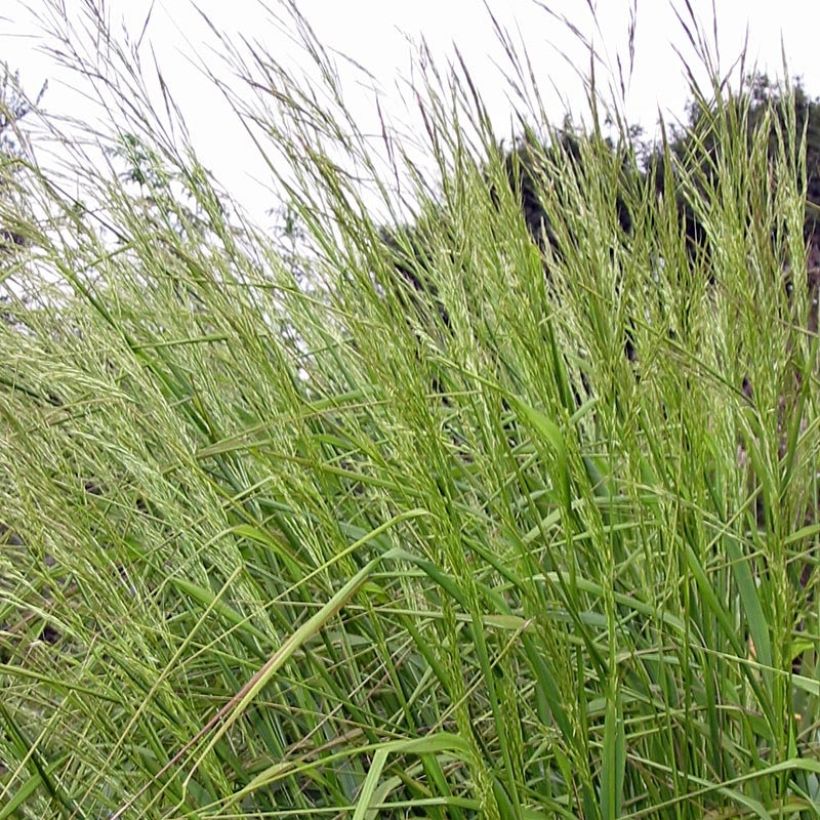

Flowering
Foliage
Plant habit
Botanical data
Stipa
extremiorientalis
Poaceae
East Asia
Other Stipa
Planting and care
Plant Stipa extremiorientalis in full sun, in dry, even poor, well-drained soil. This lovely plant will thrive easily, without any problems or maintenance. Do not cut back the foliage in winter, simply comb it through with your hand.
Planting period
Intended location
Care
This item has not been reviewed yet - be the first to leave a review about it.
Summer flowering perennials
Haven't found what you were looking for?
Hardiness is the lowest winter temperature a plant can endure without suffering serious damage or even dying. However, hardiness is affected by location (a sheltered area, such as a patio), protection (winter cover) and soil type (hardiness is improved by well-drained soil).

Photo Sharing Terms & Conditions
In order to encourage gardeners to interact and share their experiences, Promesse de fleurs offers various media enabling content to be uploaded onto its Site - in particular via the ‘Photo sharing’ module.
The User agrees to refrain from:
- Posting any content that is illegal, prejudicial, insulting, racist, inciteful to hatred, revisionist, contrary to public decency, that infringes on privacy or on the privacy rights of third parties, in particular the publicity rights of persons and goods, intellectual property rights, or the right to privacy.
- Submitting content on behalf of a third party;
- Impersonate the identity of a third party and/or publish any personal information about a third party;
In general, the User undertakes to refrain from any unethical behaviour.
All Content (in particular text, comments, files, images, photos, videos, creative works, etc.), which may be subject to property or intellectual property rights, image or other private rights, shall remain the property of the User, subject to the limited rights granted by the terms of the licence granted by Promesse de fleurs as stated below. Users are at liberty to publish or not to publish such Content on the Site, notably via the ‘Photo Sharing’ facility, and accept that this Content shall be made public and freely accessible, notably on the Internet.
Users further acknowledge, undertake to have ,and guarantee that they hold all necessary rights and permissions to publish such material on the Site, in particular with regard to the legislation in force pertaining to any privacy, property, intellectual property, image, or contractual rights, or rights of any other nature. By publishing such Content on the Site, Users acknowledge accepting full liability as publishers of the Content within the meaning of the law, and grant Promesse de fleurs, free of charge, an inclusive, worldwide licence for the said Content for the entire duration of its publication, including all reproduction, representation, up/downloading, displaying, performing, transmission, and storage rights.
Users also grant permission for their name to be linked to the Content and accept that this link may not always be made available.
By engaging in posting material, Users consent to their Content becoming automatically accessible on the Internet, in particular on other sites and/or blogs and/or web pages of the Promesse de fleurs site, including in particular social pages and the Promesse de fleurs catalogue.
Users may secure the removal of entrusted content free of charge by issuing a simple request via our contact form.
The flowering period indicated on our website applies to countries and regions located in USDA zone 8 (France, the United Kingdom, Ireland, the Netherlands, etc.)
It will vary according to where you live:
- In zones 9 to 10 (Italy, Spain, Greece, etc.), flowering will occur about 2 to 4 weeks earlier.
- In zones 6 to 7 (Germany, Poland, Slovenia, and lower mountainous regions), flowering will be delayed by 2 to 3 weeks.
- In zone 5 (Central Europe, Scandinavia), blooming will be delayed by 3 to 5 weeks.
In temperate climates, pruning of spring-flowering shrubs (forsythia, spireas, etc.) should be done just after flowering.
Pruning of summer-flowering shrubs (Indian Lilac, Perovskia, etc.) can be done in winter or spring.
In cold regions as well as with frost-sensitive plants, avoid pruning too early when severe frosts may still occur.
The planting period indicated on our website applies to countries and regions located in USDA zone 8 (France, United Kingdom, Ireland, Netherlands).
It will vary according to where you live:
- In Mediterranean zones (Marseille, Madrid, Milan, etc.), autumn and winter are the best planting periods.
- In continental zones (Strasbourg, Munich, Vienna, etc.), delay planting by 2 to 3 weeks in spring and bring it forward by 2 to 4 weeks in autumn.
- In mountainous regions (the Alps, Pyrenees, Carpathians, etc.), it is best to plant in late spring (May-June) or late summer (August-September).
The harvesting period indicated on our website applies to countries and regions in USDA zone 8 (France, England, Ireland, the Netherlands).
In colder areas (Scandinavia, Poland, Austria...) fruit and vegetable harvests are likely to be delayed by 3-4 weeks.
In warmer areas (Italy, Spain, Greece, etc.), harvesting will probably take place earlier, depending on weather conditions.
The sowing periods indicated on our website apply to countries and regions within USDA Zone 8 (France, UK, Ireland, Netherlands).
In colder areas (Scandinavia, Poland, Austria...), delay any outdoor sowing by 3-4 weeks, or sow under glass.
In warmer climes (Italy, Spain, Greece, etc.), bring outdoor sowing forward by a few weeks.

































